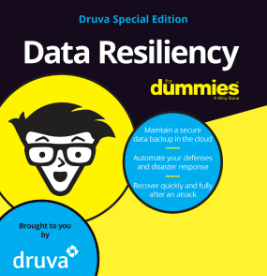Separation of data from metadata
Modern architecture splits data from metadata and enables dynamic resource scaling. By separating out the metadata, the architecture can independently optimize both metadata and data operations. With dynamic scaling, the system can support the most intense workloads, without over-provisioning resources.
Automatic updates of backup software
Over-the-air updates of backup software allow the constant improvement of the product to boost data resiliency and increase resistance to cyber threats. In SaaS applications, these updates take place automatically, ensuring the end-user has access to the most recent, best version of the software without having to take any action manually.
Object storage for backups
Object storage delivers increased resiliency while mitigating costs. Objects remain protected by storing multiple copies of data over a distributed system; if one or more nodes fail, the data can still be made available, in most cases, without the application or the end user ever being impacted. Read the blog for a closer look at how object storage differs from, and provides advantages over, block storage.
Off-site redundancy
Different from backups, redundancy maintains a live copy of your services running in real-time and available instantly to ensure 100% server uptime. Entirely separate from on-site servers, redundant sites operate on a different network to ensure no interruption of services in the event of an outage.
Cloud-based disaster recovery
Cloud DR helps protect resources and ensure business continuity. Businesses negate the effects of disasters or outages by quickly restoring data from backups in the cloud. By leveraging the capabilities of the cloud, businesses solve many of the issues of traditional DR and accelerate recovery without dedicated hardware while reducing costs.

